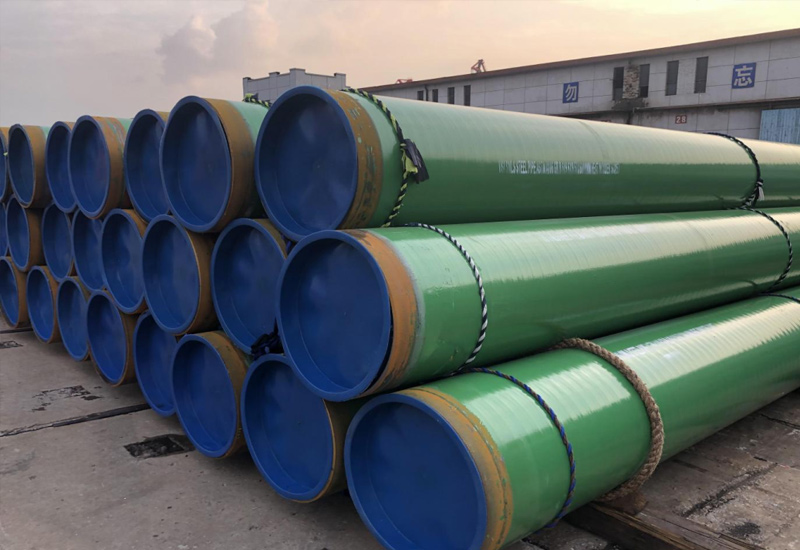HOT BLOG TAGS
SY/T 0413
SY/T 0413-2002: Technical Standard for Polyethylene Coating of Buried Steel Pipelines
1. Standard Definition and Background
SY/T 0413-2002:Released by National Economic and Trade Commission of China on May 28, 20021 implemented on August 1, 2002. I This petroleum industry standard (PS) is developed by Petroleum Engineering Construction Standardization Committee and formulated by CNPC Engineering Technology R&D Institute. It has replaced SY/T 4013-1995 and reached consensus standard for corrosion protection of buried steel pipe epoxy powder coating of polyethylene recommend standard.
Key Objectives: Long-term corrosion protection Structure support in soil environments through:
Standardisation of 2 (2PE) and 3 (3PE) interceptor coating systems
Performance levels of workable material
Quality control protocols
Field application procedures
Historical Context:
Developed during China’s Pipeline construction (1990s–early 2000s)
Adopted German DIN 3067-1991 with variation for Chinese climatic conditions
Replaced by GB/T 23257 (2010) and still in use for legacy projects
2. Scope of Application
2.1 Service Environments
| Coating Type | Temp. Range | Primary Applications |
| Normal (N-Type) | -30°C to 50°C | Oil/Gas/Water transmission (non-aggressive soils) |
| High-Temp (H-Type) | -30°C to 70°C | Geothermal/desert pipelines |
2.2 Pipeline Systems Covered
Energy Transport: Crude oil, natural gas, refined products (design pressure ≤4.0 MPa)
Municipal Utilities: Water supply/drainage, irrigation networks
Industrial Lines: Slurry transport, steam pipelines
3. Coating Structure & Material Requirements
3.1 Coating Systems
| Structure | Layers | Key Features |
| 2PE | ① Adhesive + ② PE | Cost-effective; moderate corrosion resistance |
| 3PE | ① FBE + ② Adhesive + ③ PE | Superior adhesion/mechanical protection |
3.2 Thickness Requirements
Table: Minimum Coating Thickness (mm)
| Pipe DN (mm) | FBE (μm) | Adhesive (μm) | PE Layer | |
| Std (G) | Reinf (S) | |||
| <100 | – | 170–250 | 1.8 | 2.5 |
| 100–800 | 60–150 | 170–250 | 3.0 | 3.7 |
3.3 Material Specifications
Epoxy Powder (FBE):
Gel time (200°C): ≤30 sec
Cathodic disbondment (65°C/48h): ≤10 mm
Adhesion: ≤Grade 2 (cross-cut test)
Adhesive:
Peel strength: ≥35 N/cm (2PE), ≥60 N/cm (3PE) at 20°C
Softening point: ≥90°C (2PE), ≥80°C (3PE)
Polyethylene:
Density: ≥0.940 g/cm³
Carbon black: 2.0–2.4%
Thermal aging (100°C): ΔMFR ≤35% after 2,400h (N-Type) or 4,800h (H-Type)
4. Manufacturing & Construction
4.1 Surface Preparation
Abrasive cleaning: Sa 2.5 (near-white metal)
Anchor profile: 50–75 μm
Preheating: 40–60°C (max 4h before coating)
4.2 Coating Application
| Process | Parameters |
| FBE Spraying | Voltage: 40–80 kV; Thickness: 60–150 μm |
| Adhesive/PE Extrusion | Temp: 150–170°C; Weld overlap: ≥10 mm |
| Cooling | Water-cooled to ≤60°C |
End Treatment:
100–150 mm uncoated zone at pipe ends
Bevel angle: ≤30°
Temporary rust inhibitor: ≥50 μm DFT
5. Testing & Inspection
5.1 Performance Requirements
| Test | Requirement |
| Impact Resistance | No cracking at 24 J |
| Cathodic Disbondment | ≤15 mm (2PE), ≤10 mm (3PE) at 65°C/48h |
| Bend Test | No cracking at 2.5° bend |
| Peel Strength | ≥35 N/cm (2PE), ≥60 N/cm (3PE) at 20°C |
5.2 Quality Control
100% inspection: Visual + holiday detection (25 kV)
Thickness checks: 1st/5th/10th pipe per batch, then 1 per 10 pipes
Sampling frequency:
Peel test: 1 per 50 pipes
Mechanical properties: Per 8h shift
6. Engineering Applications & Limitations
6.1 Major Projects
West-East Gas Pipeline I: 3,000+ km with 3PE coating (15+ years service)
Sino-Russian Crude Pipeline: H-Type coating for -45°C environments
Urban Gas Networks: 2PE coatings for DN≤300 pipes (40% cost reduction)
6.2 Technical Limitations
Thickness control: Incompatible with overlap zones in spiral application
Testing duration: 2,400h thermal aging test impractical for QC
Environmental gaps: No VOC/heavy metal restrictions
Adhesive metrics: Missing tensile strength/elongation criteria
7. Technical Legacy & Evolution
SY/T 0413-2002 laid the foundation for China’s modern pipeline coating systems by:
Establishing material/process benchmarks for 2PE/3PE coatings
Reducing corrosion failures by ~70% during 2002–2010
Enabling localization of PE/epoxy materials (50% cost reduction by 2005)
Advancements:
Smart coatings: Embedded sensors for real-time monitoring
Self-healing systems: Microcapsule-based damage repair
Eco-formulations: VOC-free adhesives, recycled PE
Guidance:
For in-service pipelines coated per SY/T 0413:
Monitor thermal aging (MFR change ≤35%)
Verify cathodic protection compatibility
Replace field joints after 15 years
New projects should adopt GB/T 23257-2017.
Related Products
Share:
HOT TAGS
latest posts
- Steel Density Analysis: Core Differences between Mild and Medium Carbon Steels and Industrial Applications
- Carbon Steel Floating Pipeline Systems: Innovative Applications of LSAW/SSAW Steel Pipes in Marine Engineering
- LSAW Steel Pipe: UOE vs JCOE Process | Allland steel pipe
- Onshore Pipeline: A Complete Selection Guide
- 3PE Pipe Coatings: A Guide to Protection, Standards&Applications








